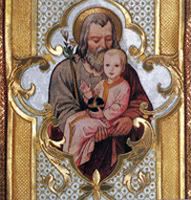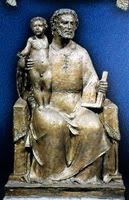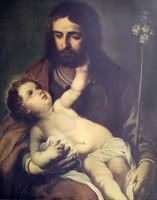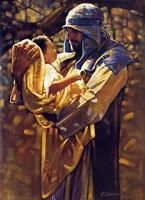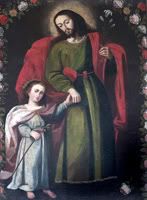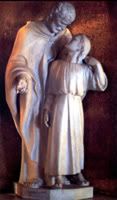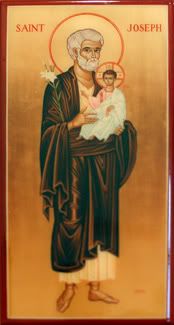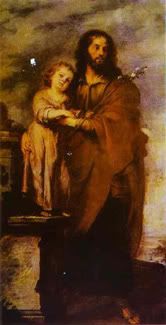, from New York City, who was kind enough to provide me with interesting and challenging questions. I hope it isn't too presumptuous to post it. I think this is a great way to re-introduce myself.
I have re-arranged the positions of the questions and answers somewhat.
GeneralBeakerkin: What are some of your favorite films? Camera Lucida: I tend to go for the romantic ones like
The Titanic and
Gone with the Wind. But when I feel serious, I find that Eric Rohmer, the French director, has an uncanny probing into the human psyche, and he is quite generous too, rather than cynical.
But, I also love the black and white American classics with Ava Gardner, Audrey Hepburn, Lana Turner, Marlene Dietrich. And of course the indomitable Clark Gable, Gary Cooper, Cary Grant, Gregory Peck etc…
Beakerkin: I have noticed that few people on the left have a sense of humor. Is it just impossible to save the world and be comedic at the same time?Camera Lucida: You know, I find that some of the most serious people have a real sense of humor, and some of the most avowed comics are very serious people. So, I guess the world works mysteriously with both kinds.
Beakerkin: Is there a semi-religious component to the far left? Are people like myself and Warren just more practical?Camera Lucida: The only thing I can think of about the leftist mentality is that they have an inferior/superior complex. They feel inferior but want to come off as superior. Perhaps their religious component is their narcissism. They always seem so self-obsessed, and tend to worship whatever morality it is they themselves come up with.
Beakerkin: Is the study of the classics in Literature important ? Should students be introduced to Shakespeare and Moby Dick? Should we replace them with more current authors? Camera Lucida: I find that modern novels (I tried reading Joyce, but got lost halfway, and the same with Virginia Wolf) tend to leave me slightly depressed. Either they’re too pessimistic, or they’re too self-conscious. I studied Shakespeare first when I was only 13 – we had to memorize parts of Macbeth for school tests. There’s nothing like memorization of beautiful parts of great literature. With time, the meaning becomes more and more relevant. Of course, we couldn’t understand it at the time!
As for Moby Dick, what fascinates me is that the author went into every possible field, from art to religion to botany to ship building, to write his book. A truly erudite author. I wonder if there are any like him around now?
Contemporary literature tends to be confessional and self-obsessed. And the authors are often called up on plagiarism. Is it lack of imagination?
Finally, I think also the Classics, Roman and Greek, should be taught. I studied Latin only for two years as a teenager, and it is amazing how it helps with language. I’m so sorry I didn’t study it more. Modern day life (from buildings to words) is still dependent on these ancient civilizations.
Art
Beakerkin: What are your views on art. Is there a particular school of art or artist that you are fond of?Camera Lucida: These days I’ve been looking at a lot of Byzantine Art, which has bee relegated to the back burner of Art History. But the sumptuous golds, and the transcendent faces and expressions are very moving. I love the Leonardo drawings. I’ve been looking at a lot of Titian lately, especially at his many Mary Magdalenes. And Rembrandt’s depictions of Biblical stories are a great pleasure to contemplate.
Amongst the moderns, the flowers of Emil Nolde, the seascapes of Dufy, and the interiors of Matisse bring a smile to my face!
Beakerkin: We have an odd poster a Commie named Ducky who has a disdain for Renoir. He feels that Renoir is over rated. Yet in my opinion one can see the love of the subject he painted mostly women reflected in his art. What are your views on Renoir?Camera Lucida: There is something funny about Renoir. If you look at his most famous painting
Bal au Moulin de la Galette, it looks like people who got together during a summer (Sunday?) afternoon to enjoy each other’s company. In reality, though, most of the women in the painting are prostitutes or dancers from cabarets, and the men bohemian artists. There is nothing innocent about the painting.
I think this is the biggest catch in modern painting. It usually goes for some extreme, taboo subject, however subtly.
For example, Warhol’s Marilyn’s are really a form of iconography. But it is blasphemy, since he’s bringing an ordinary woman at the same level as say Mary.
Older painter also did their share of nudes (usually following classic myths), but often their biblical works are exemplary!
Beakerkin: Some religions like Islam and to a much lesser extent Judaism have prohibitions against sculpture and paintings in a house of worship. Does the presence of stained glass windows and frescoes in a church enhance the experience.Camera Lucida: In Ethiopian (and Eastern Orthodox Churches, as far as I know), sculpture is prohibited, since it is believed to be closest to human form, due to its 3D nature. Yet, these are churches which put icons of Mary right in the church where people kneel to her and pray to her!
Personally, I think that anything that reminds you of God is wonderful. Religious art does it much better than secular art, for obvious reasons. But like everything else, we have the responsibility not to let the art dominate the belief itself. A painting, a hymn, or a sculpture cannot
substitute for God.
Beakerkin: Traditional Jewish houses of worship do not have musical instruments. There is the Shofar but that is not a musical instrument. There is plenty of singing of prayers but it is done without instruments. My friends would often joke about playing the charge theme at sporting events before performing ceremonies. Do musical instruments in Church enhance or detract the overall experience?Camera Lucida: Not at all. It is like paintings, sculptures and other works of art. In fact, the whole of religious art can be summarized as one of the ways in which we can remember God and get closer to Him. This is especially powerful during a Church service, surrounded by holy music and sacred stories on beautiful stained glass windows.
Originally, also, religious imagery was used as a teaching tool for illiterate converts, and also as a constant reminder to new believers through visual forms.
Beakerkin: There is a perception that religious people do not appreciate fine art. My experience has shown this to be a false premise. Is this just another stereotype?Camera Lucida: It is a difficult not to regard say Matisse’s work as some very intelligent use of color and deconstruction of space. It all becomes a kind of mental playfulness when you compare it to Pietas of Christ. Religious paintings always leave me with wonder and deep emotion, whereas Matisse and all those other colorists just make me smile. (Or not – depending!)
Fashion/Design
Beakerkin: Is fashion a lower art form than painting or just a more practical application of art to every day life?Camera Lucida: I really think that any kind of decorative art, like fashion, interior design, jewelery etc… is secondary to art. It lacks the attempt at spiritual depth, and is instead trying to give you superficial (surface) pleasure.
You can love a beautiful ring because of the fit, the combination of gem stones, the colors, and the exceptional design, but can you compare that feeling to one of Rembrandt’s crucifixions, or even Renoir’s transcendent (but not necessarily holy) faces?
Beakerkin: When I worked in the fashion industry there was an odd disdain for the customer. The designers would dread designing for the masses and this disdain would result in clothes that were poorly designed. What are your views of the fashion industry? Have the products become better or worse on an aesthetic level over the last five years?Camera Lucida: I think many fashion designers have become like modern artists, where their "inner" creativity wins the day. In some ways fashion has gone both ways, where there are the crazies like John Galliano who just goes over the top. His clothes are very interesting to look at, but are totally unwearable.
And there are those like Stella McCartney, and even Betsy Johnson, who seem to be designing for themselves, in some basement with a sewing machine. Where they seem to have a disdain for craft. And their clothes are also unwearable (no style).
So, yes, it is all about themselves. Galliano is talented and can get away with it. But in my view, Stella and Betsy are just hoaxes.
Beakerkin: The people in the fashion industry of NYC have an odd divine mission mentality. This may seem odd but the Fashionistas have a sense of purpose that exceeds that of DHS. Is the devotion to fashion misunderstood by people like myself ? I am a numbers person and just see products, deadlines and profits? Am I missing the boat?Camera Lucida: Yes, it all borders on the semi-religious. I think this is the mark of the modern artist, who has become The Creator. Fashion is no different.
Beakerkin: Most clothes are designed for tall rail thin women. In actuality fit models are not attractive and are selected for bodily proportion rather then beauty. Is unrealistic body image part of the problem in the fashion industry ? Lets face it most women are not 5'10 and a perfect size eight. What are your views on the subject ?Camera Lucida: You know, I don’t think the average woman on the street cares about "realistic" fashion models. It’s like emulating the stars, we look up to them rather than be on equal footing with them.
That said, the ordinary woman is very creative at bringing the fashion to her level, after seeing what Cindy Crawford or Linda Evangelista was wearing lately. I think a down-to-earth fashion magazine like InStyle does a great job of that.
EthiopiaBeakerkin: I am familiar with some of the people of Ethiopia, Eritrea, Tigre, etc. can you explain what the major groups are? What separates them tribal history, language or locality. Camera Lucida: They are all part semitic peoples having descended from the Sabaeans of Southern Arabia peninsulas several thousand years ago. They are mostly found in the northern regions of Ethiopia.
There are actually three similar groups: the Tigrean, the Eritreans (who now have their own country) and the Amhara.
Their differences are mostly language, and historical leadership. The Amhara people are probably the most Ethiopian of the three, having invested in leadership and nation building unlike the Tigre, through centuries of dynasties of Kings and Emperors. For example like the late Emperor Haile Selassie. I would say the Tigre are more tribal oriented than national. An Amhara will say “I am an Ethiopian.” Whereas a Tigre is more likely to side with his ethnic group first.
Beakerkin: How far were you from the Gondar province where the Jewish population the Falasha lived ? Did you ever meet them in Ethiopia.Camera Lucida: When I was very young, and still living in Ethiopia, we lived mostly in Addis Ababa, the new capital city in central Ethiopia. Gondar, much further north, used to be the old one. I honestly didn’t know anything about the Falasha until the whole brouhaha broke out. I remember people discussing the Falasha and saying that it was a ticket to get out of Ethiopia for “fake” ones. I don’t know how true this is. I also don’t think they were persecuted, but lived in rural areas like other Ethiopian agricultural peoples.
Beakerkin: Ethiopians have a Christian Church that has a slightly different Bible than the rest. I think the book of Enoch is accepted in the Ethiopian Cannon. What should lay people know about the Christians of Ethiopia?Camera Lucida: Well, you have to understand that Ethiopia followed the Copts, and the monophysites, at the very early schisms. This was not really a theological disagreement, but rather a "political" loyalty to the Alexandrian Patriarch at the time. With the isolation that ensued, yes, there are versions of the Ethiopian Bible that do not meet the criteria of other Bibles. But, nonetheless, the Ethiopian Orthodox Church, throughout the centuries of Christianhood, has kept in touch with western and eastern churches (for example, Ethiopian monks were invited to the Florence Council as late as the 15th century), and still continues an ecumenical relationship with other churches.
Well, perhaps the most striking thing with the Ethiopian Orthodox Church tradition is its connection with the Old Testament. I think it is one of the most Judaic of the Christian Churches. For example, young boys are circumcised in the Jewish tradition, and some dietary habits of devout Christian follow the Old Testament strictures.
Beakerkin: There was a brutal Communist thug named Mengistu whose misrule created a civil war and massive deaths. Did the ethnic separatism of the Eritreans etc. start with Mengistu or exacerbate the divisions of Ethiopia.Camera Lucida: The Eritrean question has been brewing since its federation with Ethiopia in the 1950s. But I can say that it had been successful in many ways. I know many Eritreans who really feel a deep connection with Ethiopia still. It was a Marxist rebel group which started the guerrilla warfare (not the general population), and it was funded by Arab, Muslim countries. So, the whole separation movement was initiated by a minority of outsiders.
Beakerkin: The Rastafarians have an unusual reverence for the former ruler of Ethiopia Haile Selassie. Is their odd views on pot smoking and the former ruler of your country annoying or comedic.Camera Lucida: It is pretty annoying. Actually, Haile Selassie was generous to these people and gave them a bit of land outside of Addis (part of the Exodus?). I think he was hoping to bring them back to their senses. Or who knows, he may have been flattered. But, this non-Christian view does not win them many friends. Although, I must say, many Rastas have converted to the Orthodox Church, and have been trying to do the same to other Rastas in Jamaica.
Beakerkin: What is the official language of Ethiopia? Few people are aware that the fourth Semitic language Amharic is Ethiopian. Are Ethiopians more related culturally and historically to the people of the Arabian Peninsula and Semites then West Africans.Camera Lucida: Yes, it is Amharic, which is a branch of the semitic languages. Ethiopia is unique in that her history is so separate from Arabia, and the rest of Africa. Even the original Sabaeans who migrated across the Red Sea eventually built their own separate culture and traditions. Plus, the Christian religion and tradition made it a country truly apart from the rest of Africa. Funnily enough, though, many African countries have turned to Ethiopia for leadership. For example the original Organization of African Unit (OAU) has its headquarters in Addis Ababa.




